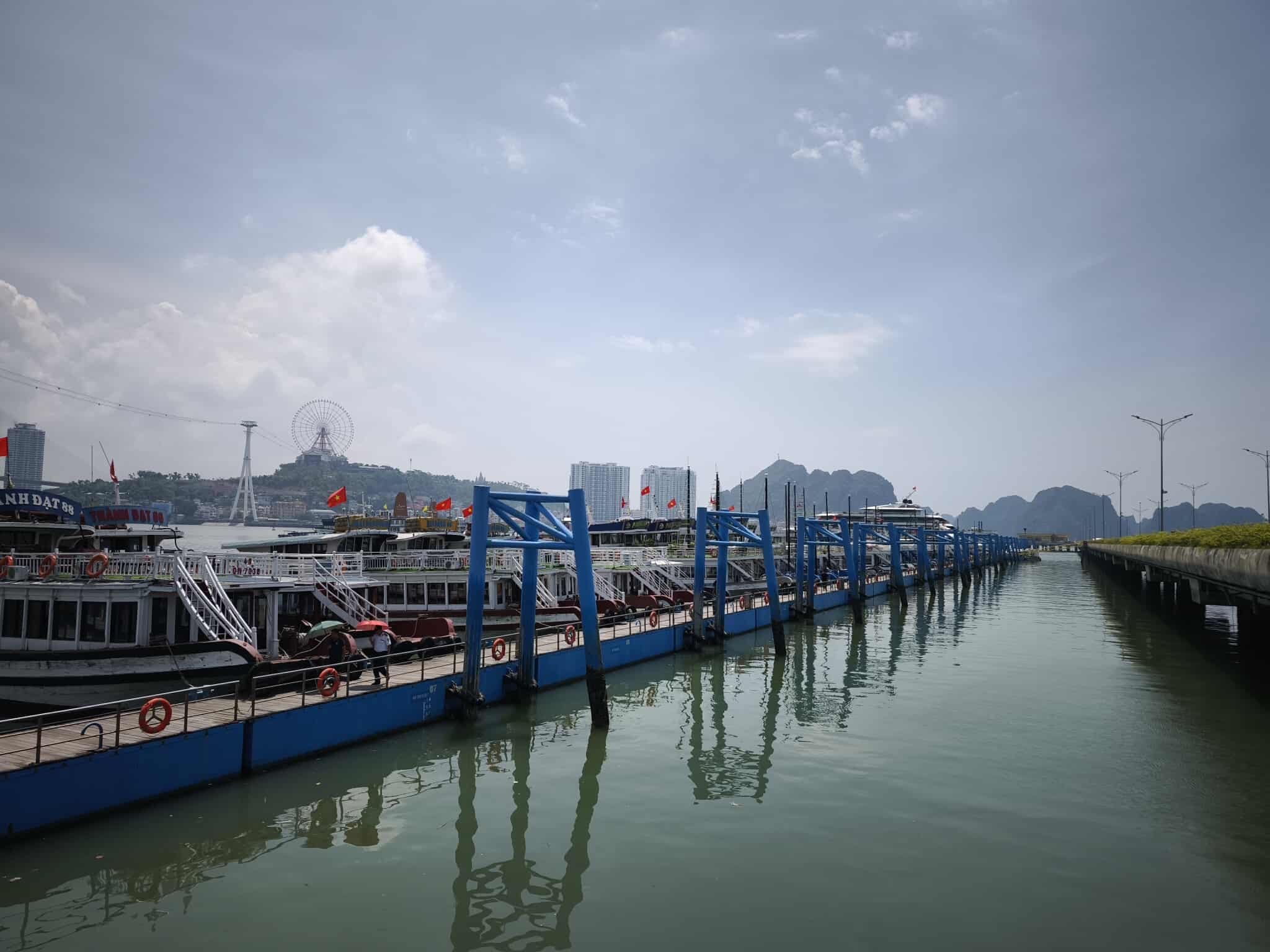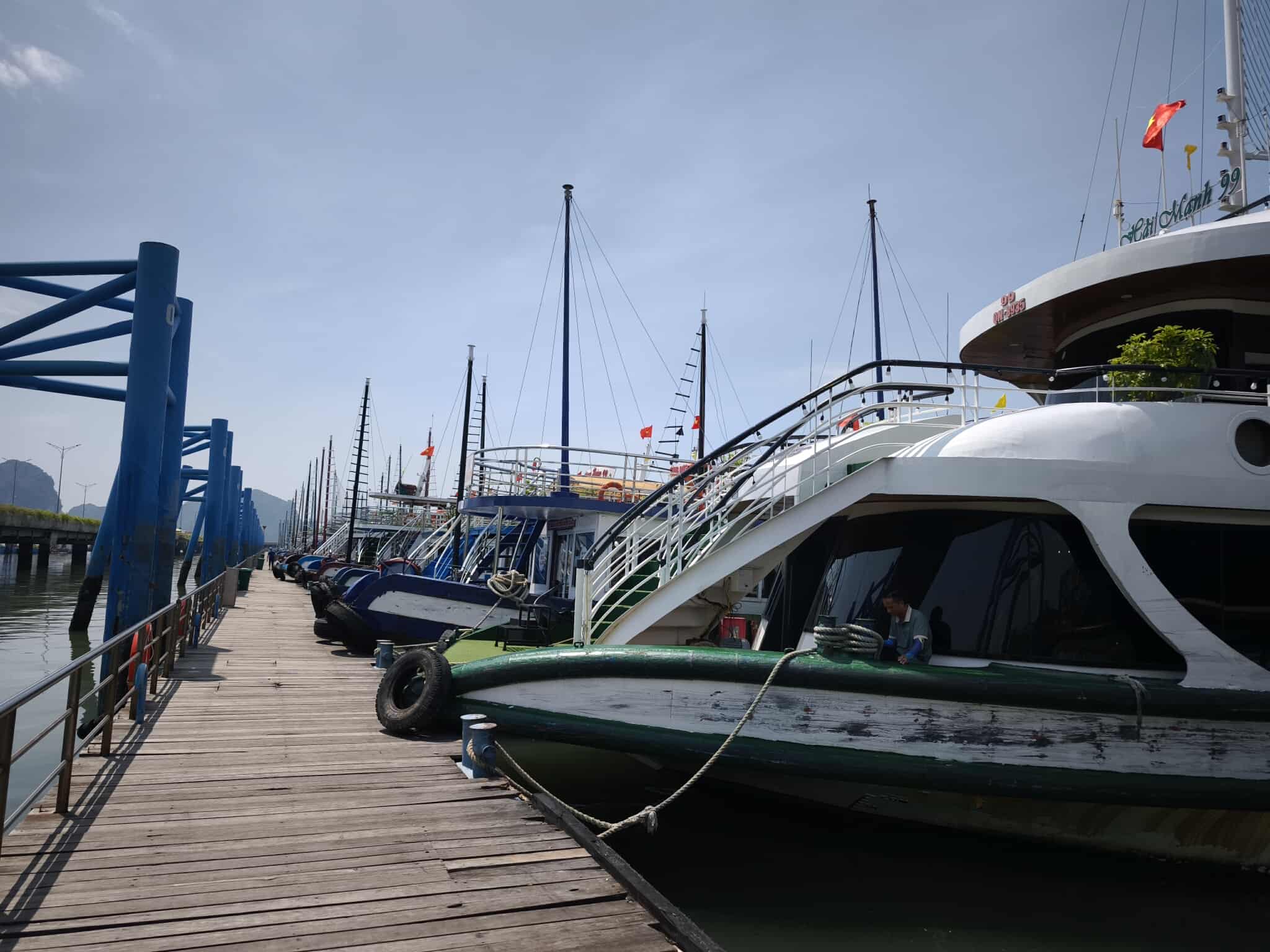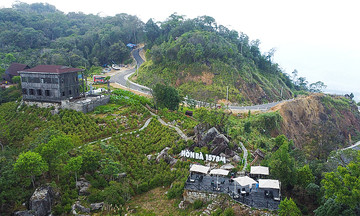On the morning of 28/7, Pham Van Quang, captain of the Phuong Dong 14 boat, sat dejectedly scrolling through his phone. He reported a significant decrease in passengers following the Vinh Xanh boat capsizing. Normally, during the peak season, his boat would make at least three trips a day. Now, he's lucky to make one.
Having worked in Ha Long Bay tourism for decades, Captain Quang has never witnessed an incident as sudden and devastating as the Vinh Xanh tragedy. He added that he lives near the captain of the Vinh Xanh, a man he knew to have many years of seafaring experience.
"In all my years of operation, I've never seen a boat capsize so quickly," he said.
 |
Ha Long International Passenger Port on the morning of 28/7. Photo: Le Tan |
Ha Long International Passenger Port on the morning of 28/7. Photo: Le Tan
Dao Duy Hieu, owner of the Dong Duong boat, has also struggled for over a week as domestic tourist bookings for Ha Long Bay tours plummeted by 80% following the accident. International tourist numbers haven't been as affected, but their peak season has already passed.
The capsizing of the Vinh Xanh 58 on 19/7, which resulted in 39 deaths, is Vietnam's deadliest maritime accident in 20 years. The boat capsized within seconds and lost its GPS signal at 2:05 p.m. (14:05). The first reports of the accident reached rescue services two hours later.
"I've never seen anything like it since I started captaining boats in 1994," Hieu said, explaining that sudden storms like the one on 19/7 are rare during typically sunny weather.
He added that most boats operating in the bay are now made of steel and are three to four times larger than the older wooden boats, making them safer. He also believes negative and inaccurate information on social media has further fueled tourists' fears.
Bui Van Toan, owner of the Fuji QN 8755, a 48-passenger boat, said that since 19/7, customers have been consistently canceling tours, some groups numbering in the dozens. He estimates a 50% drop in domestic tourists, primarily due to fear. "For days, I've been doing nothing but issuing refunds," he said.
Other boat owners reported even worse situations, going days without any passengers. They worry that this apprehension will persist.
 |
Boats docked at Ha Long International Passenger Port on the morning of 28/7. Photo: Le Tan |
Boats docked at Ha Long International Passenger Port on the morning of 28/7. Photo: Le Tan
Hoang Tung, director of a travel agency in Hanoi, said the impact of the Vinh Xanh incident extends beyond fixed-route tour boats to five-star cruises. Over 50% of the company's Vietnamese customers have requested refunds or rescheduled their Ha Long Bay trips. Tung revealed that he had to send staff members on canceled five-star cruises to avoid total losses.
Viet Travel also reported a family of 10 who changed their travel plans due to fears of traveling by boat in Ha Long Bay. They now face difficulties finding a new tour as their group size falls short of the minimum 20-30 passengers required. Meanwhile, new bookings for Ha Long Bay tours have stagnated since the accident.
Deputy General Director Pham Anh Vu believes this situation will continue unless authorities take action to reassure tourists. He emphasizes the urgent need for a system that provides early weather warnings, precise location tracking, and immediate distress signaling in case of emergencies.
Representatives from the Quang Ninh Provincial Inland Waterways Port Authority and Inland Waterway Vehicle Registration Office stated that Ha Long Bay's boat management system uses GPS technology, known as the Ha Long Bay Tour Boat Control System, which has been in operation for 15 years.
Bui Thanh Tu, Marketing Director of Best Price, suggests that to regain public trust, authorities must conduct a transparent investigation, clearly stating the cause of the accident and outlining corrective measures. He recommends increased frequency of safety inspections, requiring updated safety certificates for all operating vessels, and making this information publicly accessible. Establishing a 24/7 hotline and rescue force on the bay, along with a clear emergency response protocol, would also help reassure tourists.
Boat owners should also provide and publicly display safety certifications both at the port and on board. Regular safety training for staff, documented through publicly available training videos, would further build confidence.
Tu Nguyen - Le Tan












